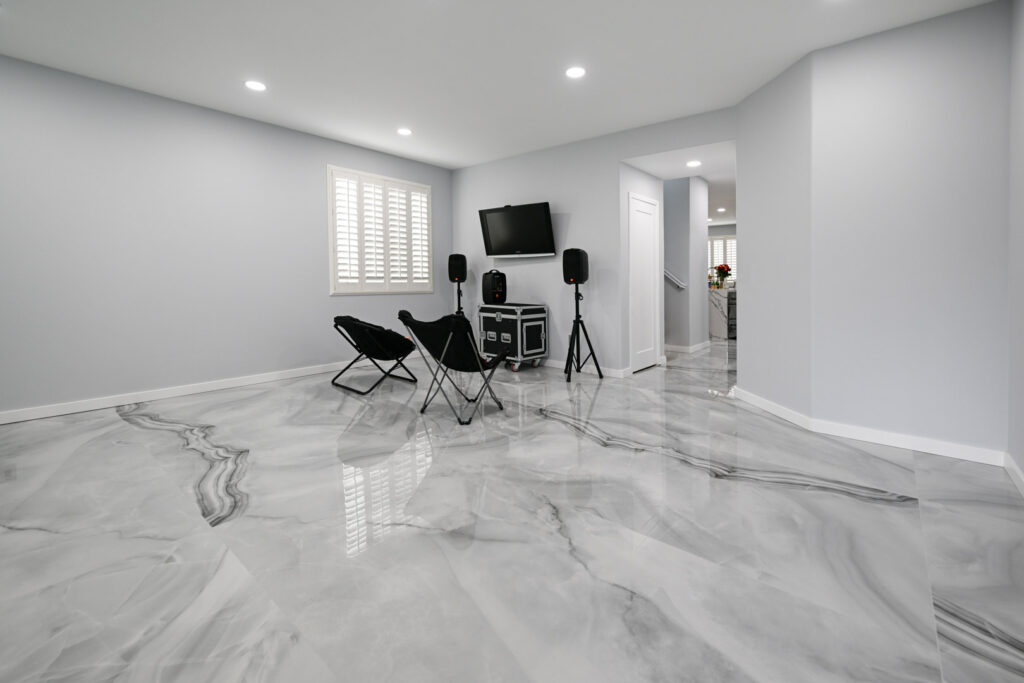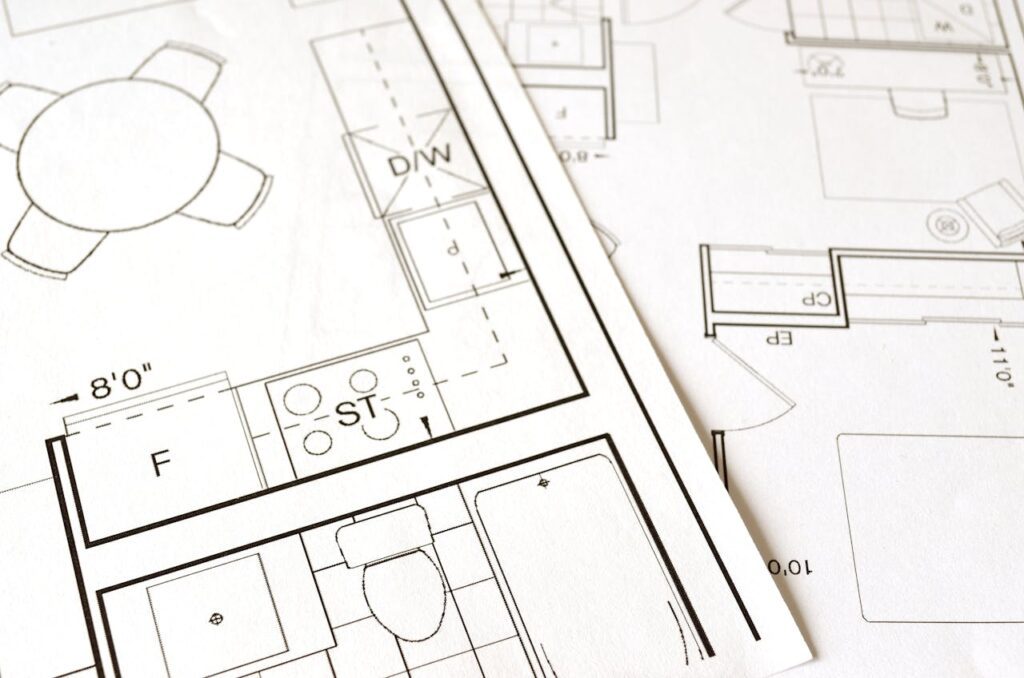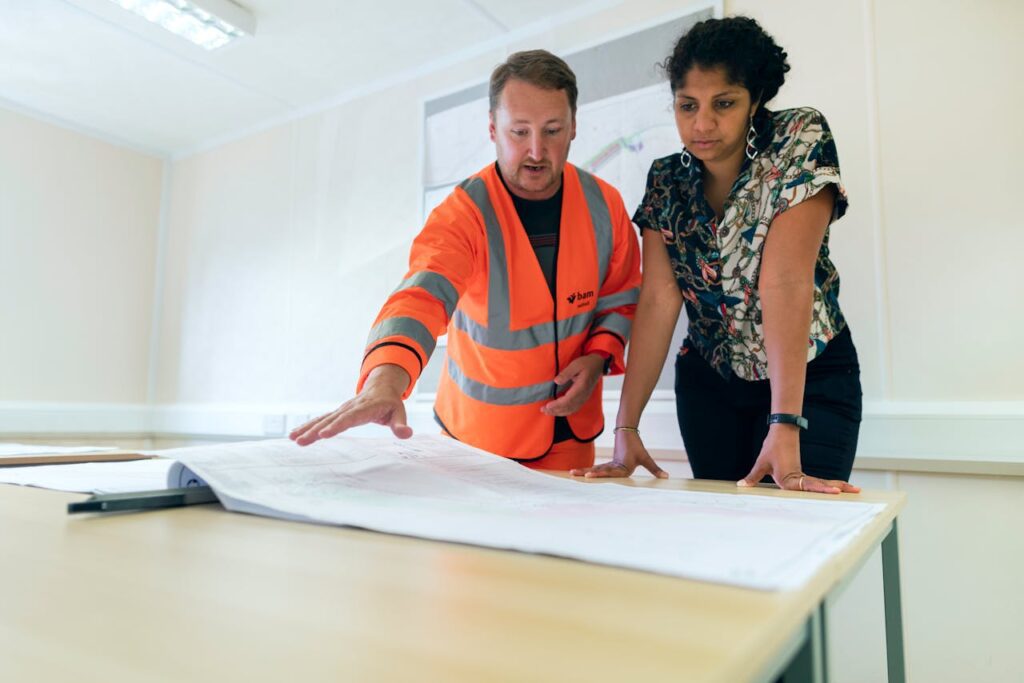Collaborating with architects and designers on your floor plan can transform your space from ordinary to extraordinary. By combining your vision with their expertise, you can achieve a design that is both functional and aesthetically pleasing. Whether you prefer a modern, minimalist look or a cozy, rustic feel, working with professionals can bring your dream home to life. This collaboration allows for a blend of creativity and practicality, ensuring that every inch of your floor plan is optimized for your needs.
When architects and designers join forces, the result is a harmonious fusion of style and functionality. From innovative layouts to stunning finishes, this partnership unlocks endless possibilities for creating a space that truly reflects your personality and lifestyle. Get ready to see your floor plan evolve into a masterpiece with the help of skilled architects and designers.
Understanding the Architect’s Role
Client Specifications
Architects play a crucial role in aligning designs with client specifications. They meticulously listen to clients’ needs and preferences, translating them into architectural designs that reflect the homeowners’ vision. This ensures that the final floor plan meets the exact requirements of the residents.
Architects are responsible for creating residential architectural designs that not only look visually appealing but also function effectively. By working closely with clients, architects can design spaces that are both aesthetically pleasing and practical for daily use. They consider factors like room sizes, traffic flow, and furniture placement to optimize the layout for maximum usability.
Local Regulations
One of the key responsibilities of architects is to ensure compliance with local building codes and regulations. They possess an in-depth understanding of architecture regulations and guidelines, guiding homeowners through the legal aspects of construction. By adhering to these regulations, architects help homeowners avoid potential fines or delays during the building process.
Architects collaborate with builders to create floor plans that not only meet regulatory requirements but also enhance the overall aesthetic appeal of the property. By combining their expertise in architectural style with knowledge of local regulations, architects can design spaces that are not only beautiful but also structurally sound.
Aesthetic Appeal
In addition to functionality and compliance, architects focus on enhancing the aesthetic appeal of a floor plan. They incorporate elements of architecture that elevate the design, making it visually striking while maintaining its practicality. Through thoughtful consideration of materials, colors, and textures, architects create spaces that are both visually stunning and functional.
- Architects ensure that every aspect of the floor plan contributes to the overall design cohesion.
- They balance form and function to create spaces that are both visually appealing and highly usable.
Understanding the Interior Designer’s Role
Space Optimization
Interior designers focus on optimizing space functionality and enhancing visual aesthetics. They work closely with architects to ensure that the floor plan not only looks good but also serves its purpose effectively.
Interior designers consider movement patterns within a space, ensuring that the layout allows for easy navigation while maintaining a harmonious design. By collaborating with architects, they can create spaces that are both beautiful and practical.
Client Preferences
Gathering client preferences is a crucial aspect of an interior designer’s role. They take into account the client’s lifestyle, tastes, and needs to inform their design choices. This collaboration ensures that the final design reflects the client’s personality and vision.
Interior designers work with clients to understand their desired interior elements and style preferences. By incorporating these preferences into the floor plan, they create personalized spaces that resonate with the client.
Material Research and Concept Development
Material research is essential in achieving cohesive interior designs. Interior designers delve into various interior finishes and specifications to select materials that align with the overall design concept.
Concept development is a creative process where interior designers brainstorm ideas and develop a cohesive design theme. By working closely with architects and clients, they bring these concepts to life in the form of well-executed interior projects.
Choosing the Right Professionals
Assessing Qualifications
When collaborating on your floor plan, assess the qualifications of design professionals and skilled builders. Look for experience in projects similar to yours.
Evaluate the experience of architects and interior designers to ensure they can meet your project’s needs effectively. Check for relevant certifications and training.
Consider the portfolio of potential collaborators. Look for diverse projects that showcase their versatility and creativity in design solutions.
Determining Scope
Understand the scope of your project to decide if you need both an architect and an interior designer. Larger projects might require a team with varied expertise.
Assess whether your project primarily involves structural changes or focuses more on interior aesthetics. This will help determine the key professional needed for your collaboration.
Discuss with potential collaborators about how they envision contributing to your project. Clarify roles and responsibilities to ensure a smooth working relationship.
Evaluating Effectiveness
Review past projects and client testimonials to gauge the effectiveness of potential collaborators. Look for positive feedback on communication, creativity, and meeting deadlines.
Ask for references from previous clients and follow up on their experiences working with the architects and designers. This can provide valuable insights into their work ethic and professionalism.
Consider visiting completed projects by the architects and designers you are considering. Seeing their work firsthand can give you a better understanding of their style and attention to detail.
Setting Clear Objectives
Establish Goals
Set clear objectives for your floor plan to ensure a successful collaboration with architects and designers. Define the purpose of each space to guide the design process effectively.
Identify the specific requirements for each area, such as the number of rooms, their sizes, and the flow between spaces. This clarity will help professionals understand your needs better.
Prioritize Features
Prioritize essential features and functionalities that are crucial for your space. Consider factors like natural light, storage options, and accessibility requirements.
Create a list of must-have elements that you want to incorporate into the design. This will help architects and designers focus on what matters most to you.
Communicate Vision
Clearly communicate your vision to both architects and interior designers. Use visual references, sketches, or mood boards to convey your ideas effectively.
Discuss your preferences for aesthetics, materials, and styles to ensure that the final design aligns with your taste and lifestyle.
Effective Communication Strategies
Foster Open Dialogue
Establish clear communication channels to ensure all parties involved can freely express their thoughts and ideas. Encourage active listening to understand each other’s perspectives better. This approach fosters a collaborative environment.
Maintain transparency by sharing updates, concerns, and feedback promptly. This helps in building trust among team members and ensures everyone is on the same page. Effective communication leads to smoother collaboration.
Schedule Regular Meetings
Set up consistent meetings to review progress, address any issues, and align on next steps. These meetings serve as opportunities to clarify doubts and make necessary adjustments promptly. Regular communication prevents misunderstandings.
Ensure that all stakeholders are present during these meetings to ensure alignment and gather input from various perspectives. This practice promotes collective decision-making and enhances the overall quality of the floor plan.
Utilize Visual Aids
Incorporate visual tools, such as sketches, 3D models, or mood boards, to convey design concepts effectively. Visual aids help in clarifying complex ideas and ensuring everyone has a clear understanding of the vision.

Collaborative Problem Solving
Brainstorming Sessions
Encourage collaboration through regular brainstorming sessions involving architects and designers. These sessions allow the team to share ideas freely and explore creative solutions to design challenges. By fostering an open environment, innovative concepts can emerge, leading to a more dynamic and well-thought-out floor plan.
Decision-making Processes
Involve both architects and interior designers in projects from the initial stages. By engaging them in decision-making processes, you can leverage their expertise effectively. Architects bring structural knowledge, while designers offer insights on aesthetics and functionality. This team collaboration ensures a comprehensive approach to creating a floor plan that balances both form and function.
Flexibility and Adaptability
Maintain flexibility throughout the project to address unforeseen issues effectively. Collaboration with architects and designers requires adapting to changing circumstances and finding solutions together. By remaining open to adjustments and modifications, the team can navigate challenges smoothly and deliver a successful project outcome.
Achieving a Unified Style
Develop Vision
To achieve a unified style, develop a shared vision that aligns with the preferences of both the homeowner and the design team. This ensures that everyone is on the same page regarding the overall look and feel of the project.
Collaboration between architects and designers is crucial in translating ideas into reality. By working together, they can combine their expertise to create a cohesive design that reflects the desires of the homeowner while incorporating innovative elements from the design team.
Consistent Design Elements
Consistency in design elements is key to achieving a unified style. This includes maintaining harmony in exterior style, colors, materials, and overall aesthetic choices throughout the project.
By ensuring that the exterior style and interior design complement each other, a cohesive look can be achieved. This involves coordinating elements such as architectural details, color palettes, and finishes to create a seamless transition from the outside to the inside of the home.
Style Guide Creation
Creating a comprehensive style guide is essential for maintaining coherence throughout the project. This guide should outline key design principles, including majority color schemes, material choices, and architectural features that will be used consistently across the home.
A style guide serves as a reference point for both architects and designers, ensuring that they are aligned on the design direction and aesthetic goals of the project. It helps in avoiding any discrepancies or conflicting design choices by providing a clear framework to follow.
Planning for Functionality and Aesthetics
Analyzing Traffic Flow
When designing a floor plan, balancing practical needs with aesthetic desires is crucial. Analyzing traffic flow within the space is essential to ensure usability and comfort. By strategically placing furniture and considering pathways, you can enhance the overall functionality of the layout.
Enhancing Spatial Arrangement
Consider how different areas within the floor plan interact with each other. Integrating design features that promote a smooth flow between rooms can significantly impact the usability of the space. Optimizing spatial arrangement allows for efficient movement and utilization of each area.
Integrating Functional Design Features
To create a harmonious living space, it’s important to integrate design features that serve both aesthetic and functional purposes. For example, incorporating built-in storage solutions not only adds visual appeal but also maximizes space utilization. Selecting furniture pieces that are both stylish and multifunctional can enhance the overall functionality of the room.
Innovation Through Collaboration
Diverse Perspectives
Architects and designers bring unique perspectives to floor plan collaborations, blending functionality with aesthetics seamlessly. Their combined expertise ensures a holistic approach to space design.
Collaborating with architects and designers allows for the integration of innovative ideas that can transform ordinary spaces into extraordinary ones. By leveraging their knowledge in renovation projects and textiles, you can achieve a harmonious balance between form and function.
Technological Advancements
Embracing new technologies in the design process can revolutionize how floor plans are conceptualized and executed. Architects and designers often utilize cutting-edge software to create 3D models, providing clients with a realistic preview of their space.
The use of advanced materials such as sustainable textiles and eco-friendly finishes underscores a commitment to both aesthetic appeal and environmental consciousness. By staying abreast of the latest trends in design, architects and designers can offer clients innovative solutions that enhance the overall look and feel of a space.
Unique Design Solutions
Collaborative efforts between architects and designers often result in the development of unique design solutions that set renovation projects apart from the rest. By fostering an environment of creativity and open communication, teams can brainstorm ideas that push boundaries and defy conventional norms.
The seamless integration of different design elements, such as lighting, furniture layout, and spatial flow, can create a cohesive and visually stunning final product. Clients benefit from this collaborative approach by receiving customized solutions that cater to their specific needs and preferences.
Conclusion
Collaborating with architects and designers on your floor plan is a strategic process that requires clear communication, mutual understanding, and shared objectives. By comprehending each professional’s role, selecting the right experts, and fostering effective communication, you pave the way for a successful partnership. Ensuring a unified style, focusing on functionality and aesthetics, and embracing innovative ideas through collaboration will elevate the outcome of your project.
Your floor plan is more than just a layout; it’s a reflection of your vision and needs. By leveraging the expertise of architects and designers in a collaborative effort, you can bring your space to life in ways you never imagined. Embrace the journey of working together, stay open to new ideas, and watch as your floor plan transforms into a harmonious blend of creativity and functionality.
Design Your Perfect Floor Plan with Red White & Blue Construction!
Thinking about redesigning your floor plan? Your search ends here! Embark on an exciting journey to transform your Lafayette, CA home into the living space you’ve always dreamed of. With Red White & Blue Construction, every inch of your floor plan becomes a harmonious blend of beauty and functionality. Imagine innovative layouts that maximize your space’s potential, creating a natural flow that enhances both comfort and style. Whether you’re looking to optimize your current floor plan or dreaming up something entirely new, we’re here to bring your vision to life.
Our stellar reputation across the Bay Area speaks to our unwavering commitment to excellence, precision, and the highest standards of craftsmanship. We’re not just licensed contractors; we’re the creative minds behind your ideal living space. With transparent pricing and a client-first approach, you’re not just planning a floor—you’re laying the foundation for a whole new lifestyle. Choose Red White & Blue Construction and turn your home into a masterpiece. Design Your Perfect Floor Plan and connect with us today!
Disclaimer
The materials available on this website are for informational and entertainment purposes only and not to provide advice. You should obtain advice concerning any particular issue or problem from a professional. You should not act or refrain from acting based on any content included in this site without seeking legal or other professional advice. The information presented on this website may not reflect the most current building developments. No action should be taken in reliance on the information on this website. We disclaim all liability concerning actions taken or not taken based on any or all of the contents of this site to the fullest extent permitted by law.





